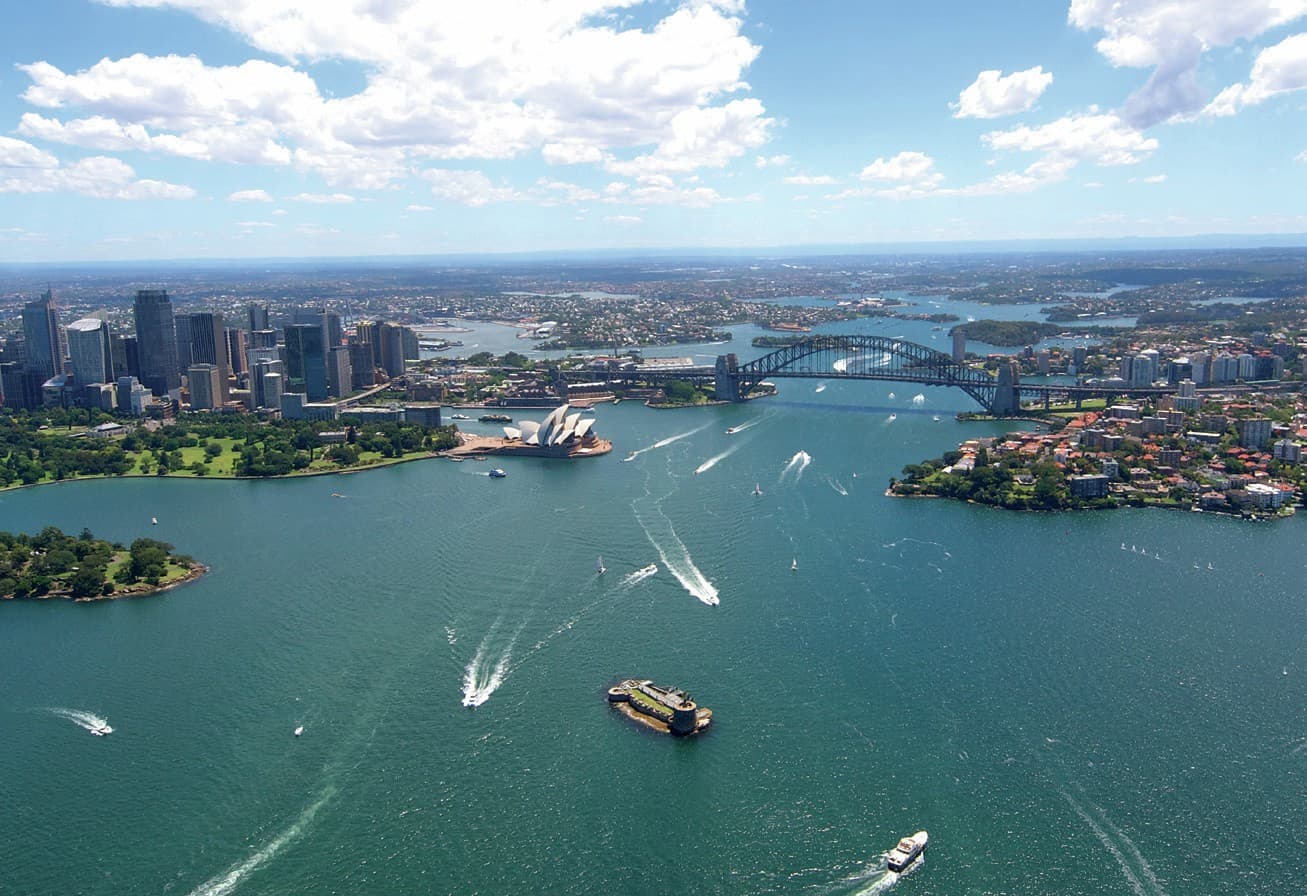A city perfectly in tune with the ocean; there’s more to Sydney than surface appearances suggest. Dive in a bit deeper and you will find Sydney has it all, from seadragons to sharks, pufferfish to penguins, as Jayne Jenkins explains.

Sydney – A Diver's Paradise
Sydney, in my humble opinion, is Australia’s, if not the world’s, most breath-taking city both above and below the ocean. What other city has such a stunning harbour with two famous landmarks, the Sydney Harbour Bridge and Sydney Opera House?
Impact of COVID and Weather on Sydney's Marine Life
The past 24 months have been a difficult time for everyone with COVID causing lockdowns and governments closing state borders. COVID has not been alone in causing problems. This year Sydney, like most of the eastern coast of Australia, has received an unprecedented amount of rain over the past six months, with 2022 currently the wettest year on record.
I feel very lucky that in Sydney, we have been able to still enjoy our local dive sites as exercise places, and our marine life has survived the floods.
Dive Sites in Sydney's Harbour and Coastline
Only scuba divers, scientists, freedivers and some intrepid snorkellers and swimmers know the secrets of the underwater realm around Sydney harbour and its coastline.
Built around harbour foreshores with more than 70km of magnificent Pacific coastline and glorious beaches, Sydney offers an outstanding variety of underwater attractions; and all of them just minutes away from the commercial heart of Australia’s largest and busiest city.
Diving Facilities and Dive Boats in Sydney
Sydney offers a range of diving unparalleled with any other Australian city. Going for a quick dive in Sydney is remarkably easy, with good dive shops close to most dive sites for air fills and local knowledge briefs or even guided dives – and inexpensive. I have been diving and photographing in and around Sydney Harbour for many years and have always believed we have great and accessible diving on our doorstep.
It’s been a challenge educating people. It never ceases to astound me how very few people have any idea of what lies beneath the waters of Sydney Harbour. The underwater world around Sydney suits every level of experience and interest; tropical species such as ornate and robust ghost pipefish often appear in the late summer months.
The EAC (for those that have not seen Finding Nemo – the East Australian Current) brings the warm summer currents carrying them southward. But it’s the temperate water life that is often the most remarkable – giant cuttlefish, some measuring a metre or more in length, are commonplace, as are large rays and sharks – including lethargic wobbegongs (a type of carpet shark sometimes three or more metres in length). Port Jackson sharks (named after Sydney Harbour) can be seen in their hundreds lazing around on the sand.
DID YOU KNOW?
Weedy sea dragons are named for the weedlike growth on their bodies. This camouflage hides them as they move among the seaweed beds where they live. The weedy sea dragon is the aquatic emblem for the state of Victoria.
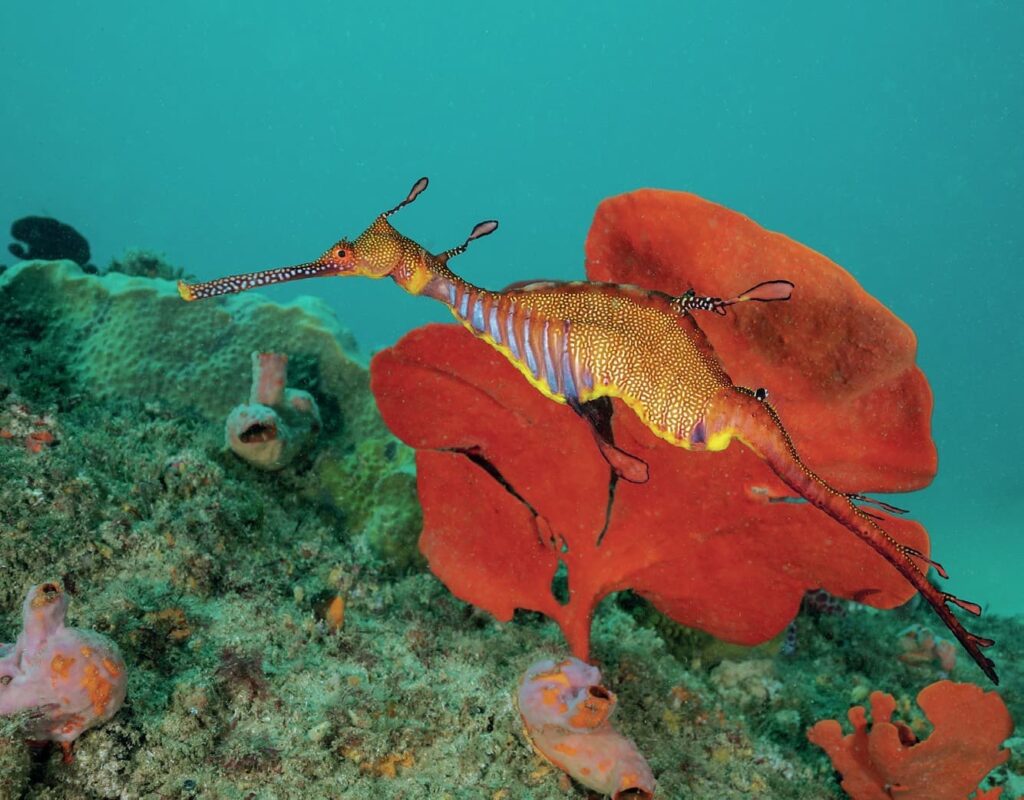
Grey nurse sharks cruise the gutters, colourful leatherjackets, seahorses, flute mouths, weedy seadragons, frogfish of many varieties, porcupinefish, and large eastern blue grouper – the list is endless and consists of many species only found in Australian waters. Shore dives are plentiful and easily accessible with good parking, and local boats take you further offshore diving to the more-secluded areas.
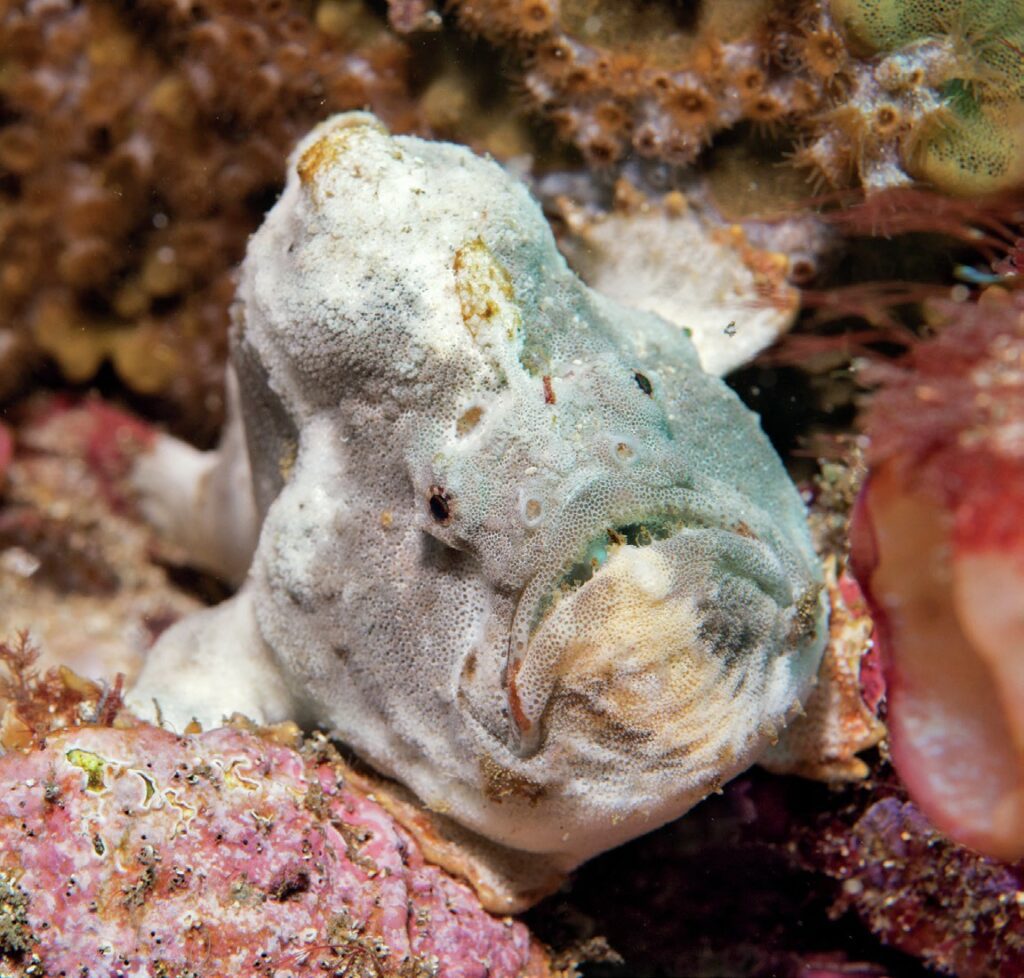
Almost all the dive facilities either own or have on permanent charter a dedicated dive boat. Boat pick-up areas are numerous and cover most of the local Sydney coastline, some venturing further south to the seal colonies. The diving schedules are varied and mostly weather related and generally you will find departures up to four times a week (maybe more in the summer months). You can bring all your own gear, or have just tanks and weights supplied, or full hire equipment if required. The usual itinerary for the day is to have one or two dives and generally a different site for the second dive.
As the most boats are a good size and comfortable, diving sites such as Long Reef, Magic Point, North Bondi and Old Man’s Hat are easily accessible. For the more adventurous and advanced divers, Sydney also offers many great wreck dives and some stores specialise in technical dives.
You can choose your dives to be either led by experienced crew, Divemaster/instructor or, if you prefer and know the site, just go in your buddy pair. The skipper of the vessel will decide on the day if the scheduled site is suitable due to weather conditions and if not, will change to the best site for the day’s conditions.
All crews are more than helpful sorting hire gear if required, helping gear up, good briefings of the dive site and safety rules of the vessel then getting you in the water with an easy giant stride or backward roll entry.
On return there is always a crew member on the surface to help get you out of the water safely and back to your seat. Tanks are changed over to full ones and after the surface interval, it is off to next dive site and repeat.
Dive Site Highlights and Recommendations
Some of my favourite boat and shore dives of the many dive sites around Sydney are:
Long Reef
Long Reef is probably Sydney’s ‘fishiest’ dive site by far. It is a dive site for all levels of diver as the depth ranges from about 8m-30m depending on where the boat anchors. My favourite area is around the gutters where the grey nurse sharks hang out. As you swim along the gutters the sun may be blocked out by the amount of southern pomfrets swaying back and forth by the hundreds. If you swim along the top of the gutters, you can also see the grey nurse sharks cruising up and down and heading to a bowl like area where you can view and photograph them quite easily. After visiting the sharks there is a great swim-through and an area with overhangs where you can generally see an eastern blue devil fish. During the dive it is possible to see wobbegong sharks, Port Jackson sharks, giant cuttlefish, schools of pomfrets and very friendly blue grouper, to name a few of the species. I personally rate this site as one of Sydney’s best in the Northern Beaches area.
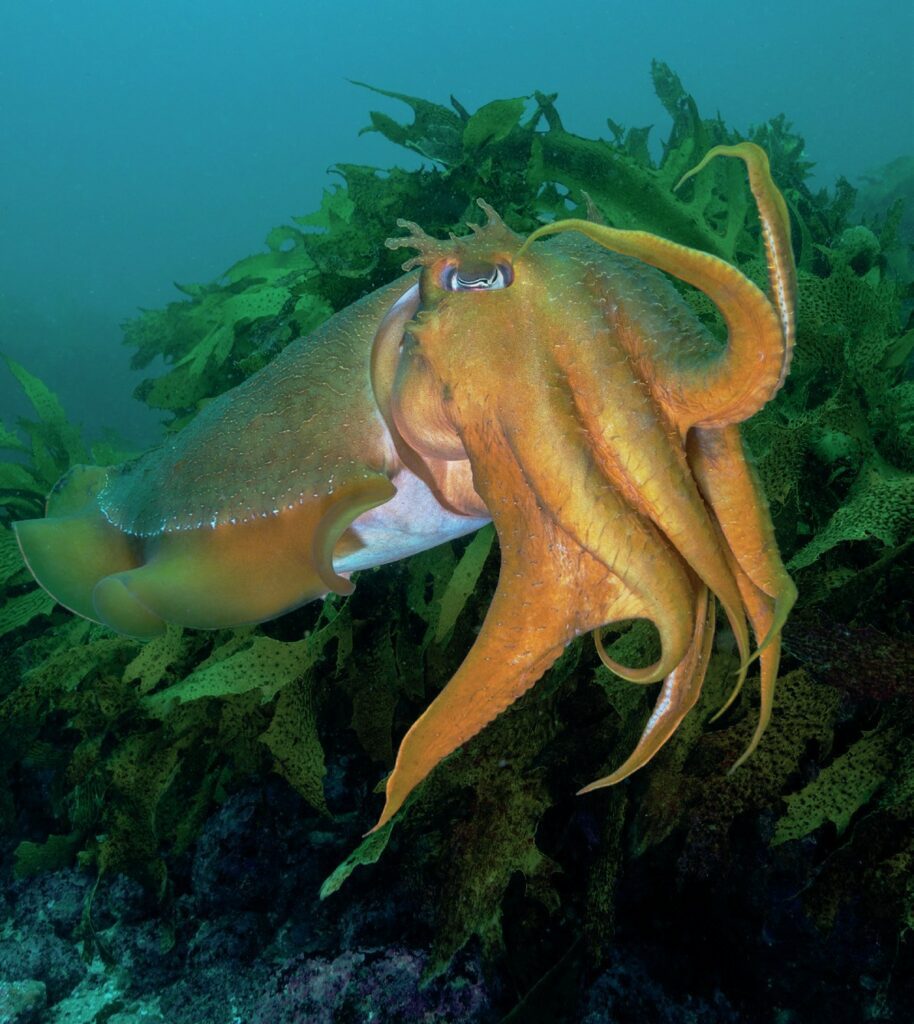
DID YOU KNOW?
Grey nurse sharks can reach a length of three metres and like to cruise around sandy bottoms and rocky caves, and close to reefs and islands, to a depth of at least 230m.
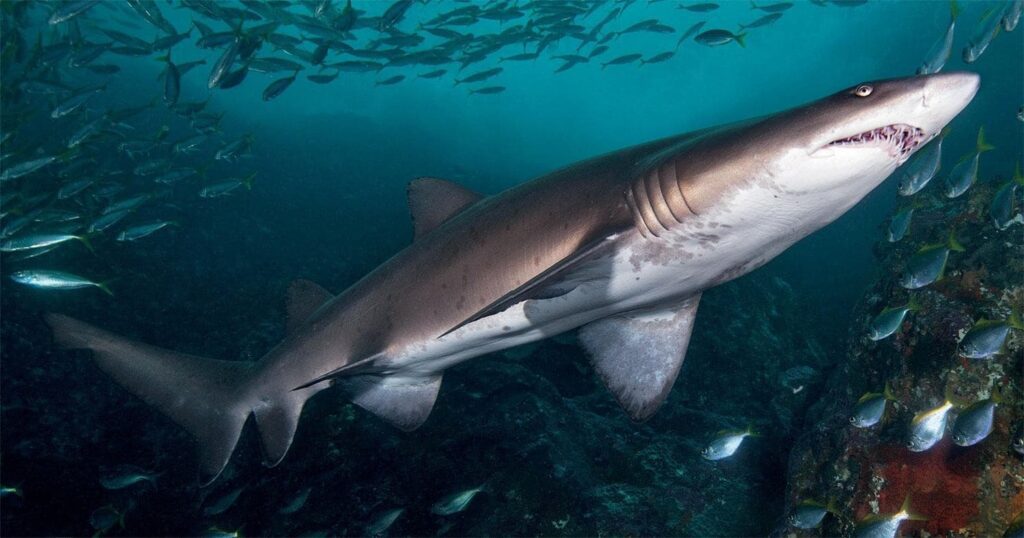
Magic Point
Probably one of Sydney’s better-known sites south of Sydney Heads. Magic Point is famous for grey nurse sharks and these days as much fish life as Long Reef. The boats generally anchor near a large ledge that drops from 7m to about 16m forming a small cave which has been home to grey nurse sharks for many years. To help recovery of the grey nurse sharks, it was designated a protected area from fishing. Best dived in small groups only and honour the diver’s policy that no one goes into the cave. There are two caves, so groups can split up. Swimming between the caves, wobbegong sharks, Port Jackson sharks, and giant cuttlefish cruise and a local eastern blue devil fish also calls this site home. If you swim to the sand line and along the kelp it is a great area for spotting weedy seadragons.
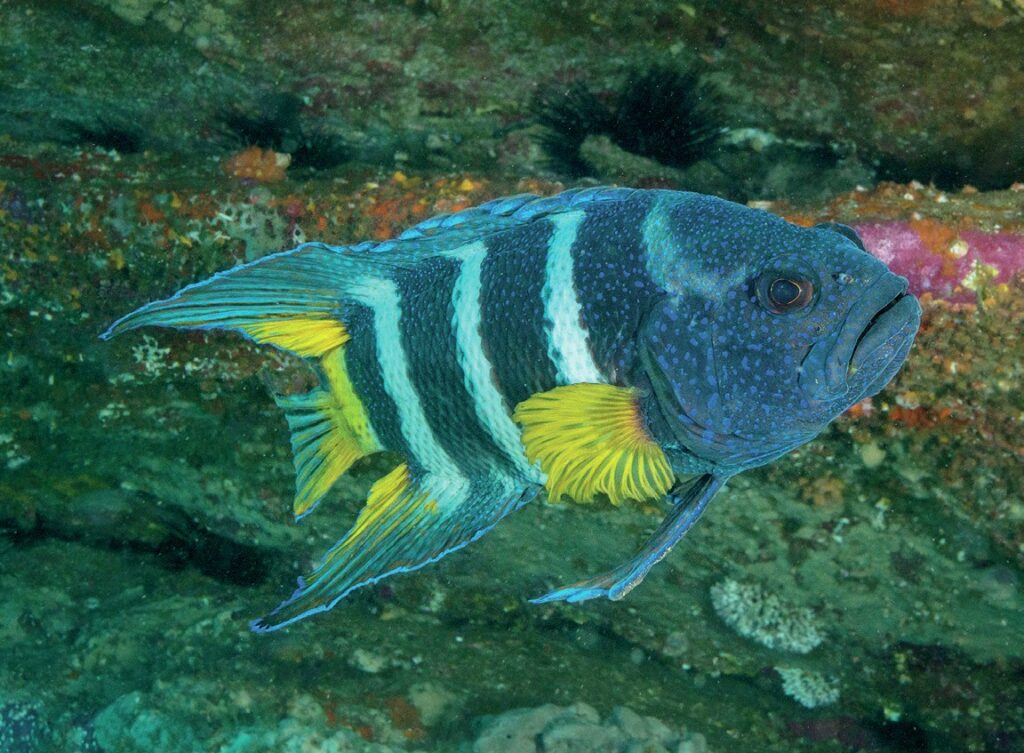
Old Man’s Hat
Old Man’s Hat is probably one of Sydney’s prettiest northern dive sites and one of my favourites for the second boat dive. The site sits in the harbour entrance just under North Head. The depth starts from about 8m to 23m – following boulders and swim-throughs down to the sand line. The boulders are covered in brightly coloured sea tulips, soft sponges, small gorgonian fans, nudibranchs and often a resting place for wobbegong sharks. It is also home to Port Jackson sharks, cuttlefish and bull rays but the highlights here are the weedy seadragons that live in the kelp along the sand line, I have seen as many as seven on one dive. There is also one very large crayfish that has been there for years and sometimes you find her talking a stroll.
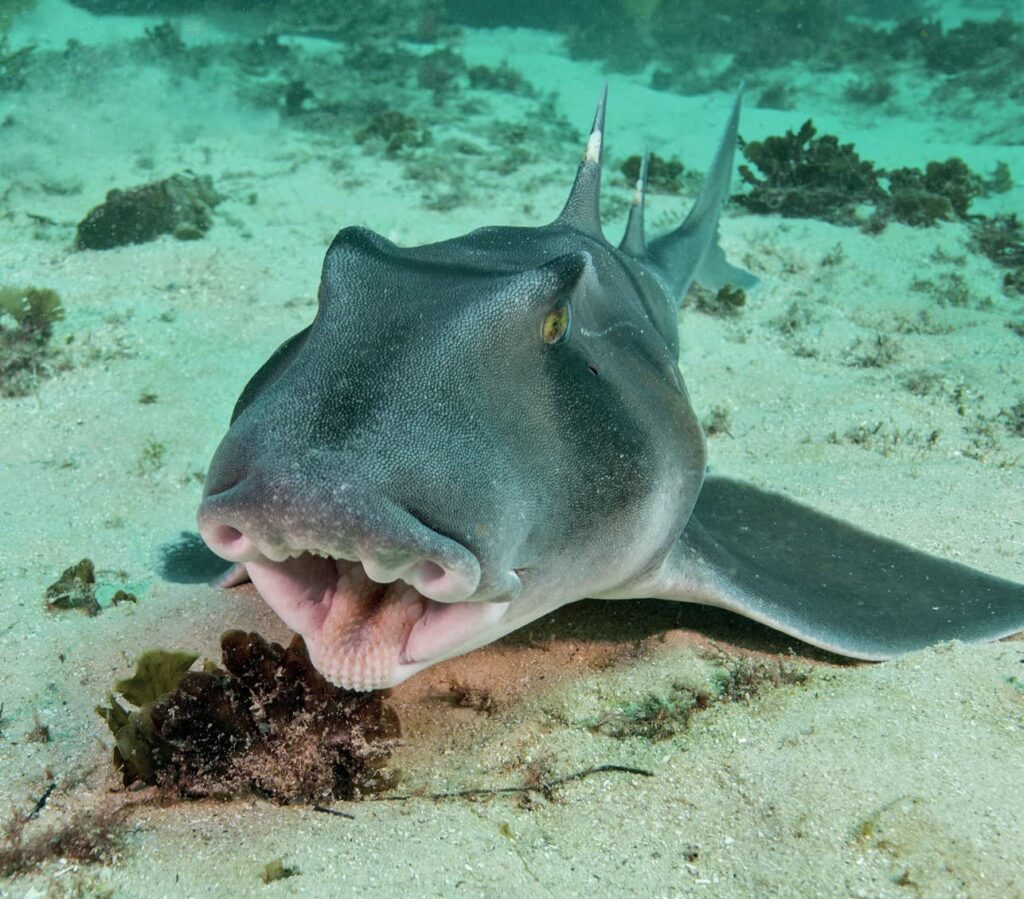
Clifton Gardens or Chowder Bay
On the north side of the Sydney harbour bridge just around the point from Bradleys Head and Taronga Zoo, you will come across Clifton Gardens (sometimes called Chowder Bay). This is probably one of Sydney’s easiest to navigate shore dives being a jetty and netted pool and one of the best night dives. Clifton Gardens is a muck divers paradise and you do not dive there for great visibility (it does happen sometimes though). This is the site for spotting the endangered White’s seahorse who have made homes on the nets and jetty pylons. Also, a great site for the many varied frog/ anglerfish, mourning cuttlefish, moray eels, nudibranchs, octopus including blue rings and pyjama squid. Clifton Gardens is where the EAC brings the warm water topicals and where you may see the ornate or robust ghost pipefish. There is always something at this dive site but just be careful of the fishing lines from the fishermen on the pier.
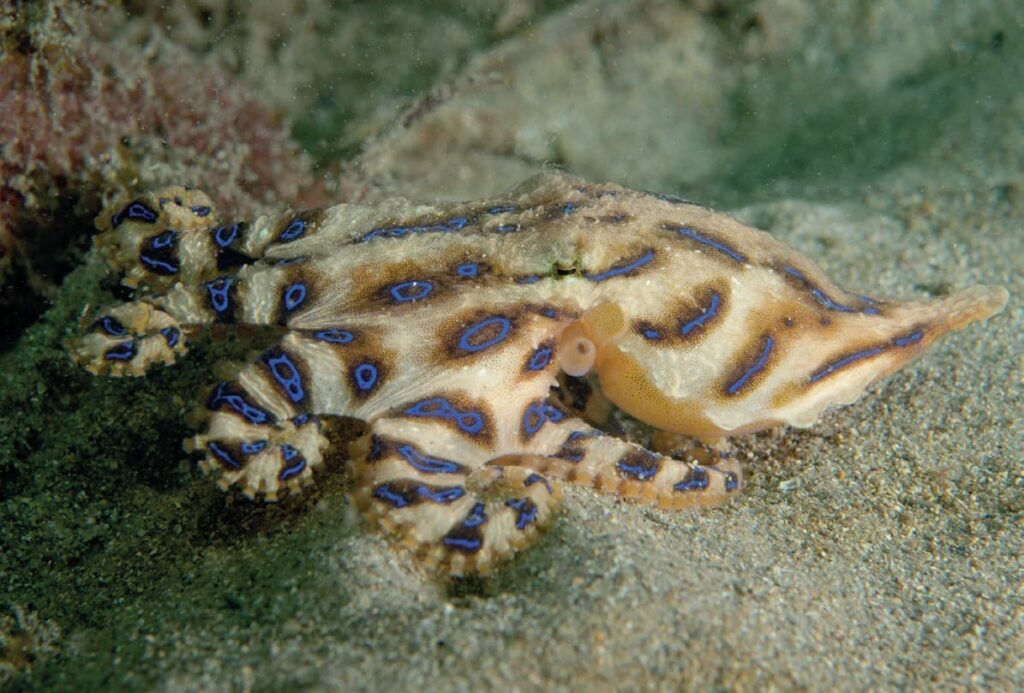
Shelly Beach or Cabbage Tree Bay
On the Sydney’s Northern Beaches, close to Manly, is Cabbage Tree Bay Aquatic Reserve. It stretches from the southern end of Manly Beach past the northern end of Shelly Beach headland covering about 20 hectares.
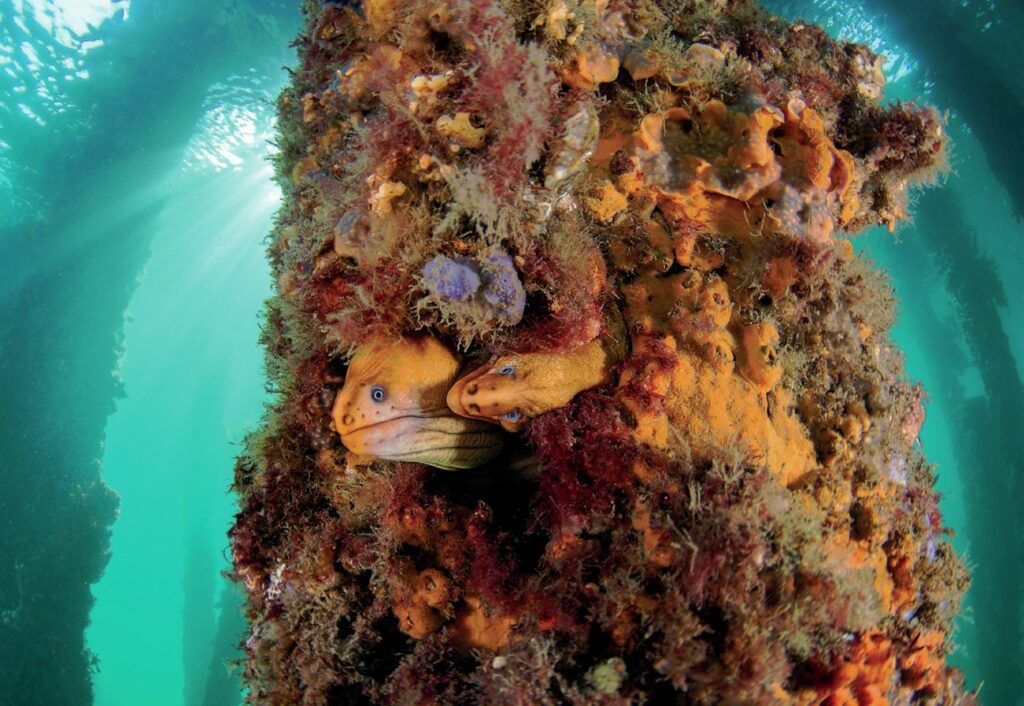
With gearing up tables and showers it is a well set up dive site. The site is easy to dive and can be dived on the right or left-hand side by just following the rocks. Local dive shops run guided dives there and can show you the highlights such as banjo rays, flatheads, weedy seadragons, dusky whaler sharks, Port Jackson sharks, wobbegong sharks, giant cuttlefish, turtles and friendly blue grouper.
Bare Island
Bare Island is located off La Perouse on the inside of the northern entrance to Botany Bay. It is one of, if not, the most popular dive sites near Sydney. Accessed from shore via a foot bridge, the island has a variety of fantastic dive sites which are protected from the ocean swell and accessible in most weather conditions except in westerly winds.
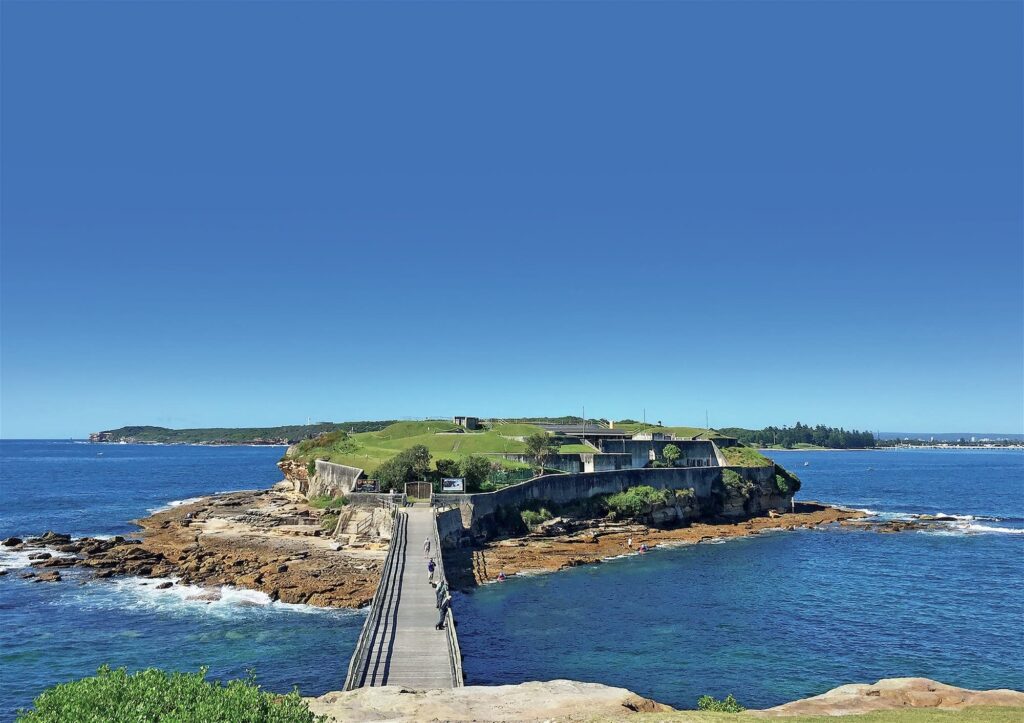
It is also one of Sydney’s most-colourful shore dives with sponges, corals and sea tulips covering the island’s walls, rocky shelves and large boulders. Marine life is abundant, with nudibranchs, sea stars, pygmy and mosaic leatherjackets, red Indian fish, weedy seadragons, frogfish and if you have a guide or good eyesight, pygmy pipehorses hiding out. Other resident fish include moray eels, eastern blue grouper, and wobbegongs, rays and Port Jackson sharks.
The Importance of Protecting Sydney's Marine Life
Although COVID and weather have been tough, I have enjoyed rediscovering some of the great dive sites around Sydney. It is great to see the fish life slowly improving as in the past 50 years, we’ve eaten 90% of the big fish in the world and destroyed half the world’s coral reefs. Most people believe marine life is transient, but much of the life in coastal locations will live and stay close by for their entire lives. A blue grouper may live in the same Sydney suburb for 30 years or more – it’s time we got to know what creatures live beneath us and do what we can to protect them. We are so lucky in Sydney with so many sites to dive – these are just a few.
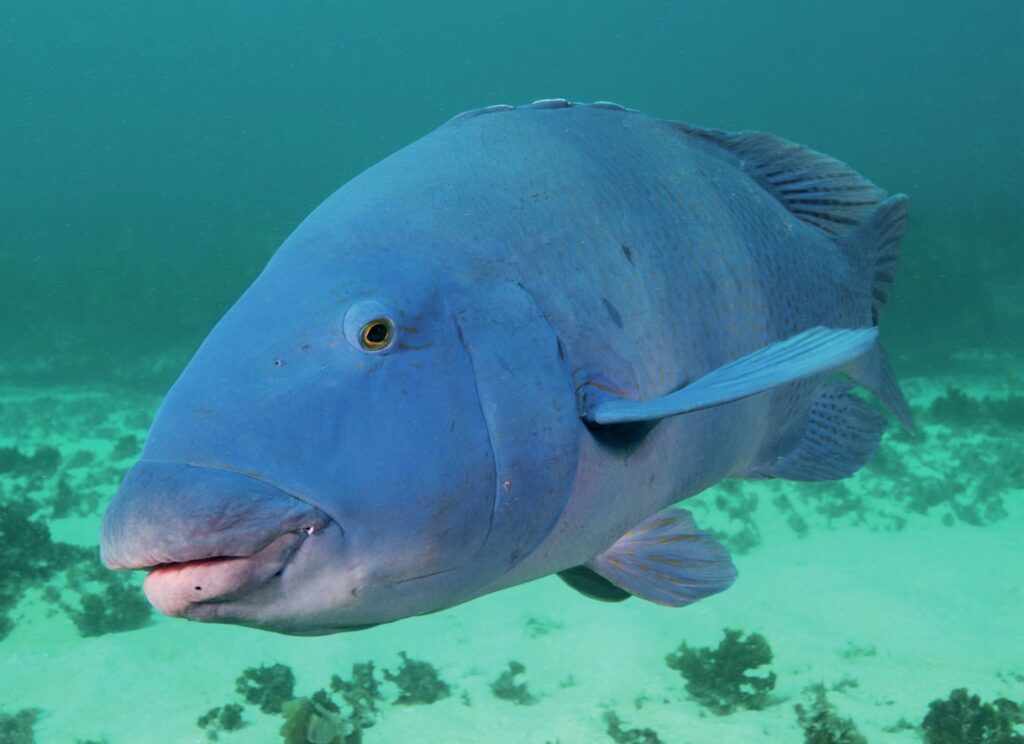
Dive Training and Certification in Sydney
For those who are new to diving or wish to further their skills, Sydney offers a variety of dive training and certification options. Local dive shops and instructors provide courses for all levels, from beginner open water certifications to advanced and technical diving courses. With Sydney's diverse dive sites, trainees can experience a wide range of conditions and marine environments, ensuring they are well-prepared for future diving adventures.
Marine Conservation and Volunteer Opportunities
If you are passionate about preserving Sydney's marine life, there are several organizations and initiatives to get involved with. Volunteering with marine conservation groups, participating in beach cleanups, and joining citizen science projects are just a few ways you can help protect the local underwater ecosystem. By supporting these efforts, you contribute to the ongoing preservation of Sydney's unique marine habitats and species.
Dive Safety and Best Practices
As with any diving destination, it is essential to follow safety guidelines and best practices when diving in Sydney. Ensure that you always dive within your skill level, use proper equipment, and follow local regulations. Be mindful of the marine environment and avoid touching or disturbing the creatures you encounter. Practicing good buoyancy control and maintaining a safe distance from marine life will help minimize your impact on the underwater world.
The Future of Diving in Sydney
As awareness of the importance of marine conservation grows, Sydney's dive sites will continue to thrive and attract divers from around the world. By promoting sustainable practices, supporting local conservation efforts, and fostering a sense of stewardship among the diving community, we can ensure that future generations will be able to enjoy the wonders of Sydney's underwater realm.
Photographs by Jayne Jenkins
This article was originally published in Scuba Diver ANZ #51
Subscribe digitally and read more great stories like this from anywhere in the world in a mobile-friendly format. Link to the article
